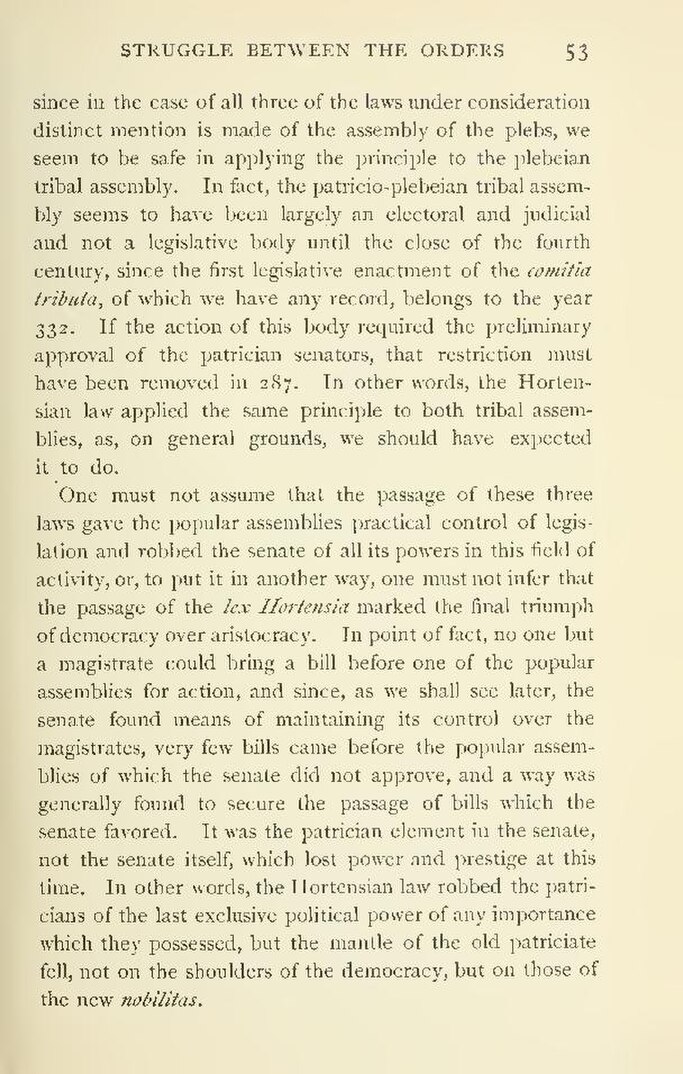since in the case of all three of the laws under consideration distinct mention is made of the assembly of the plebs, we seem to be safe in applying the principle to the plebeian tribal assembly. In fact, the patricio-plebeian tribal assembly seems to have been largely an electoral and judicial and not a legislative body until the close of the fourth century, since the first legislative enactment of the comitia tributa, of which we have any record, belongs to the year 332. If the action of this body required the preliminary approval of the patrician senators, that restriction must have been removed in 287. In other words, the Hortensian law applied the same principle to both tribal assemblies, as, on general grounds, we should have expected it to do.
One must not assume that the passage of these three laws gave the popular assemblies practical control of legislation and robbed the senate of all its powers in this field of activity, or, to put it in another way, one must not infer that the passage of the lex Hortensia marked the final triumph of democracy over aristocracy. In point of fact, no one but a magistrate could bring a bill before one of the popular assembles for action, and since, as we shall see later, the senate found means of maintaining its control over the magistrates, very few bills came before the popular assemblies of which the senate did not approve, and a way was generally found to secure the passage of bills which the senate favored. It was the patrician element in the senate, not the senate itself, which lost power and prestige at this time. In other words, the Hortensian law robbed the patricians of the last exclusive political power of any importance which they possessed, but the mantle of the old patriciate fell, not on the shoulders of the democracy, but on those of the new nobilitas.
